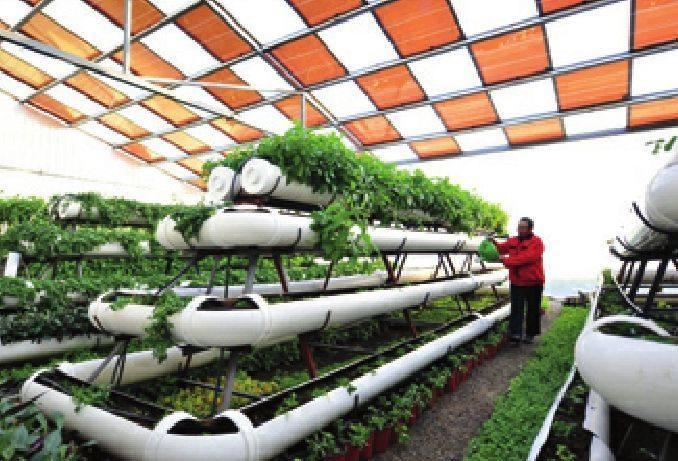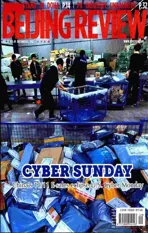A High-Speed Era
2012-04-29


Chinas high-speed rail network totaled 7,735 km at the end of October, ranking first in the world, said an official from the Ministry of Railways on November 27.
The country has made a series of breakthroughs in its high-speed rail development and in other major fields such as heavy-duty and high-altitude rail transport, the unidentified official said on the sidelines of Modern Railways 2012, an international railway exhibition hosted by the ministry in Beijing.
At the exhibition, the countrys two biggest train manufacturers, China CSR Corp. Ltd. and China CNR, both displayed new models. China CSR showcased its test trains that can travel at over 500 km per hour, and China CNR exhibited its self-developed fast intercity train, the CRH3A.
A total of 263 companies from 16 countries and regions including the United States, Germany and France participated in the exhibition.
China aims to create a high-speed railway backbone featuring four east-west lines and four north-south lines by the end of 2015, under a five-year plan on Chinas transport system approved by the State Council, Chinas cabinet.
The countrys total length of high-speed railway is expected to reach about 18,000 km by 2015.
Further Tax Cuts
Chinas new round of structural tax cuts is likely to benefit more than 900,000 enter- prises nationwide, according to a working conference held in Nanjing on November 26 to discuss the countrys pilot project of replacing the business tax with a value-added tax.
About 710,000 enterprises have been covered by the tax-cutting program, and another 200,000 will be included starting from December 1 this year, according to the meeting jointly held by the Ministry of Finance and the State Administration of Taxation.
Shanghai piloted the program on January 1 in an effort to decrease the overall tax burden for businesses and boost the transportation and service sectors. The program was then expanded to some provincial-level regions including Guangdong, Zhejiang and Beijing.
Tianjin and Hubei join the program in December.
The reform has effectively promoted the growth of the service sector and encouraged the development of small and micro-sized enterprises, said attendees at the meeting.
In Shanghai, the tax cut has helped reduce tax burdens by 22.5 billion yuan ($3.57 billion) in the first 10 months, while in Beijing, the new measure has cut tax revenue by 2.5 billion yuan ($402 million) in two months.
At the meeting, Vice Finance Minister Wang Jun said more work is needed to ensure full success of the pilot programs.
Polysilicon Probe
The Ministry of Commerce announced on November 26 the beginning of anti-dumping and countervailing investigations into imports of solar-grade polysilicon, a material used in solar equipment manufacturing, from the United States, South Korea and the European Union (EU).
The ministry will deliver a final ruling after the probes, said the ministry on its website.
The investigation into imports from the EU will be finished before November 1, 2013, but may be extended for another six months, according to an earlier statement from the ministry.
The probe was made in response to requests filed by Chinese polysilicon manufacturers, including LDK Solar Co. Ltd. and the China Silicon Corp. in September, the statement said.
The case follows an anti-dumping probe into imports of solar-grade polysilicon from the United States and South Korea launched on July 20.
The statement said the ministry would combine the two cases and make a cumulative evaluation.
Customs data showed that China imported 9,300 tonnes of polysilicon from the EU in the first half of 2012, an increase of 30.8 percent from a year earlier.
However, the average price for polysilicon imports during the period dropped 47.5 percent compared to the previous year, the data showed.
Fostering Agriculture
China wants 100 agricultural companies with annual sales exceeding 10 billion yuan ($1.59 billion) in the next three to five years, a senior agricultural official said on November 27.
The country is also aiming to build 500 high-level agricultural demonstration bases and raise the incomes of rural households engaged in industrial agriculture by more than 4,000 yuan ($645) annually, Minister of Agriculture Han Changfu said at a meeting.
By the end of 2011, China had had 111,000 major agricultural enterprises with sales reaching 5.7 trillion yuan ($915.47 billion). Products made by the enterprises accounted for one third of the countrys total supply, Han said.
However, he noted that the companies are not strong enough as nearly two thirds of them reported annual sales of less than 20 million yuan ($3.21 million).
Acquisitions and mergers will be encouraged in an effort to modernize the countrys agricultural sector, Han said, while calling for more favorable fiscal and tax policies to support the development of big farming firms.
Steel Industry Recovery
Chinas steel industry will see a better fourth quarter and in 2013 after posting whopping losses in the first three quarters, an industry insider said.
Liu Zhenjiang, Vice President of the China Iron and Steel Association (CISA), said on November 24 at a steel industry forum that most large and medium-sized steel companies have shaken off losses since October, but their main steel businesses are still suffering.
“Since the turn of this century, 2012 has been the most difficult year for Chinas steel industry,” Liu said.
Data from the CISA showed Chinese steel companies posted a total loss of 5.5 billion yuan ($874.32 million) from January to September, compared with a profit of 38.7 billion yuan ($6.22 billion) during the same period last year.
Liu urged the countrys steel enterprises to step up restructuring and upgrading to enhance their market competitiveness.
Numbers
3.08 billion
The number of debit cards that Chinese banks had issued by the end of September, said the Peoples Bank of China on its website on November 26.
15 trillion yuan
The amount of Chinas total social financing in 2012, representing 26 percent of the gross domestic product in 2012, detailed a report by Barclays on November 25.
1,991.16
The level that the benchmark Shanghai Composite Index closed at on November 27, the lowest since February 2009, according to the Shanghai Stock Exchange.
3.4 percent
The wholesale cost growth of 18 types of vegetables monitored across 36 major cities from the previous week, said the Ministry of Commerce on November 27.
Boxing Champ
Chinese boxer Xiong Chaozhong defeated Mexicos Javier Martínez Resendiz to capture the World Boxing Council Minimumweight World Title in Kunming, southwest Chinas Yunnan Province, on November 24, becoming the first Chinese professional boxing world champion in history.
Xiong, 30, nicknamed “Little Tyson,” grew up in Wenshan of Yunnan and had worked in a coal mine before he took up boxing at the age of 24.
Xiong is going to be apprenticed to the world-renowned boxing champion Muhammad Ali to learn more about boxing.“As Ali is at an advanced age, he cant teach Xiong boxing skills but he can pass his boxing experiences to him,”said Xiongs coach Liu Gang.
